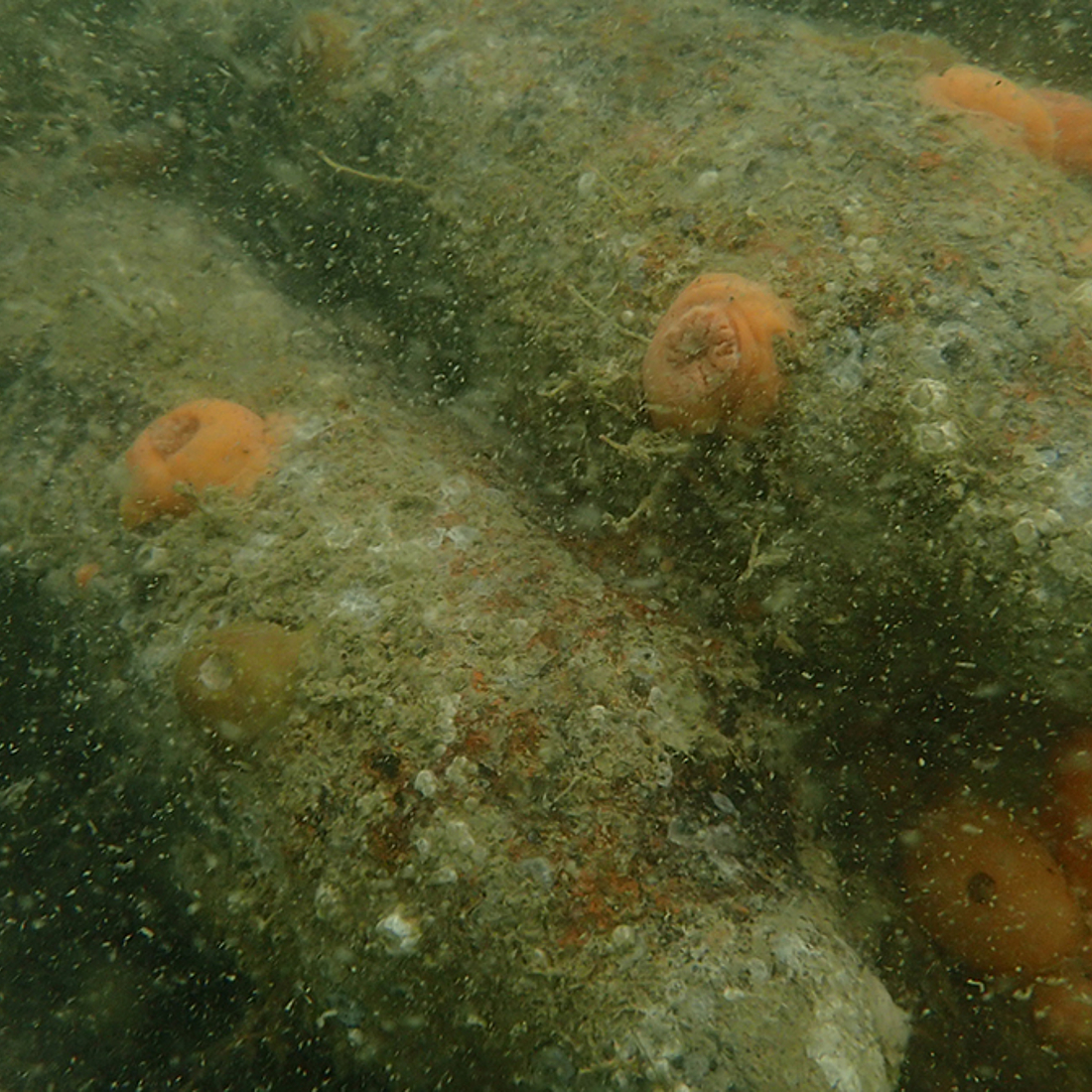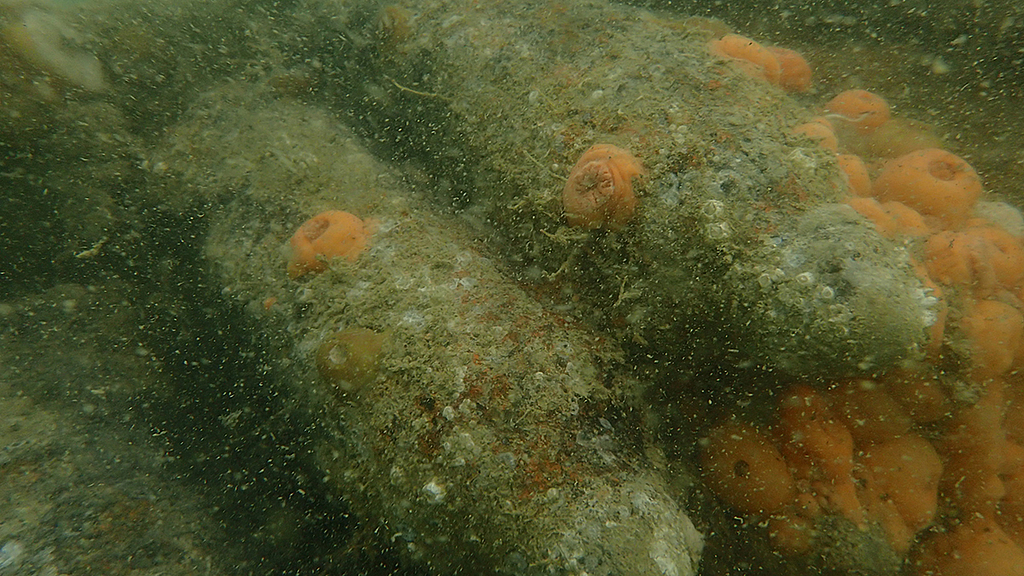Postwar munitions dumping in the German North and Baltic Seas
The two world wars shaped the history of the 20th century, killing millions of people, ravaging countless regions and also causing massive environmental destruction. After the end of the Second World War, the victorious Allies in particular faced a huge logistical challenge: the need to demilitarise the former German Reich.
Military production facilities such as weapons and explosives factories were destroyed and demolished, but vast stockpiles of munitions still remained on German soil after the collapse of the Nazi regime. Dealing with them on land would have been extremely challenging as their detonation was both laborious and dangerous. Sea dumping therefore seemed a logical solution for the disposal of these munitions; at the time, the seas were viewed as safe final resting places for remnants of war (see add-on text in Station 8 on how they were dealt with in other parts of the world).
The Allies had the munitions transported to German coastal ports and loaded onto ships. From there, many tonnes of bombs, mines, grenades, anti-tank guns and shells were cast overboard. Many of the areas where this took place were marked on nautical maps and labelled with warnings such as “munitions dumping ground”, “contaminated (munitions)” and “no fishing or anchoring”.
Several dumpsites are known to exist in the inner German Bight alone. In the seas off the Lower Saxony coast, for instance, there are sites in the areas around Scharhörn Reef, Jade Bight, Hooksiel, Minsener Oog, Wangerooge, Harle and Osterems. Dumping also took place in waters close to Sylt and Heligoland.
In recent years, some of these munitions have been recovered, but this is only a small fraction of the whole – it is estimated that these waters contain up to 1.3 million tonnes of munitions. With their casings corroding, substances such as trinitrotoluene (TNT) are now leaking into the marine environment.
These impacts not only on complex marine ecosystems, but also on shipping, tourism, fishing, cable laying and offshore construction projects such as wind farms. Marine conservation, in other words, affects a whole range of sectors. To promote a collaborative approach to marine conservation, the European Union agreed the Marine Strategy Framework Directive (MSFD), which came into force in 2008. Providing EU member states with a common regulatory framework for the first time, it aims to enhance the protection of marine environments. In Germany, the implementation of the MSFD is overseen by the Bund/Länder-Arbeitsgemeinschaft Nord- und Ostsee (BLANO), a joint federal/regionalcommittee with responsibility for the North and Baltic Seas, and coordinated with other international bodies. Pollution from munitions at sea is one of the areas covered.
Munitions can sometimes be defused and destroyed by explosive ordnance disposal experts – in Germany, the latter is done at the country’s only disposal centre for such munitions, the GEKA facility in Munster. Where munitions cannot be defused and recovered by divers, detonations are carried out instead.
The latter option, though, is dangerous and highly controversial – underwater detonations can lead not to the explosive being completely destroyed but instead to its more widespread dispersal. In addition, these explosions have profound impacts on sea creatures, severely damaging the hearing of marine mammals such as whales, for example.
This makes it all the more important to develop effective and environmentally sound strategies for future munitions recovery.
Further literature and online links
Maser, Edmund, and Jennifer S Strehse. 2020. “‘Don’t Blast’: Blast-in-Place (BiP) Operations of Dumped World War Munitions in the Oceans Significantly Increase Hazards to the Environment and the Human Seafood Consumer.” Archives of Toxicology, 1–13, https://doi.org/10.1007/s00204-020-02743-0 (open access).
Related Links:
Bund/Länder-Arbeitsgemeinschaft Nord- und Ostsee (BLANO): www.meeresschutz.info/blano.html
Landesportal Schleswig-Holstein: Kampfmittel und Kampfstoffe im Meer, https://www.schleswig-holstein.de/DE/Fachinhalte/M/meeresschutz/kampfmittelStoffe.html
Umwelt Bundesamt: Munition im Meer, www.umweltbundesamt.de/themen/wasser/meere/nutzung-belastungen/munition-im-meer
Partner
-


